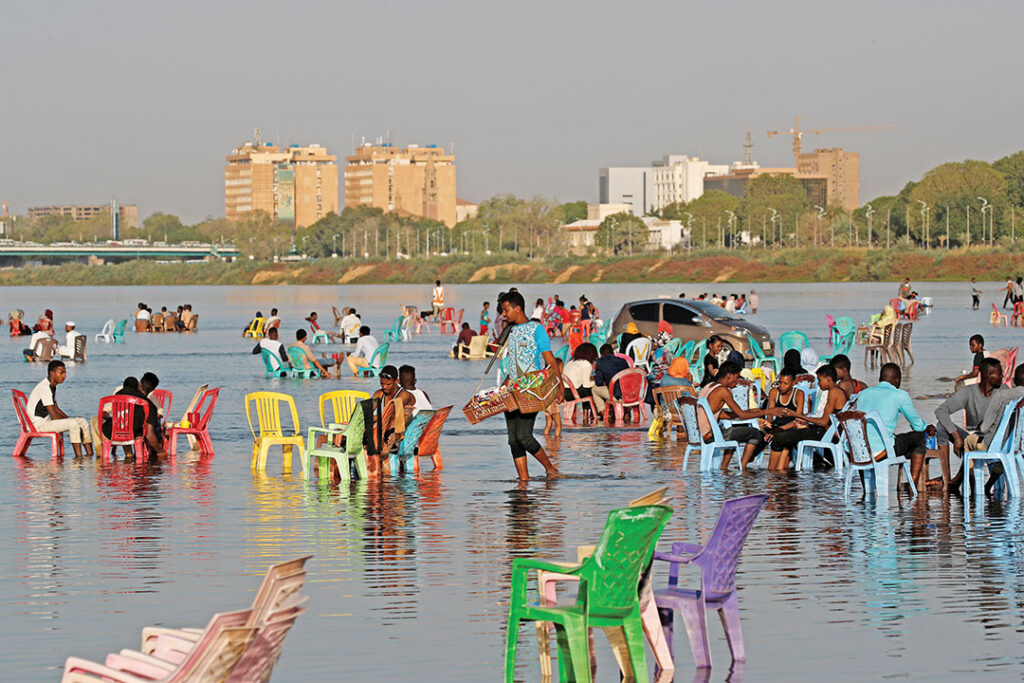ADF STAFF
The Nile River, the world’s longest, meanders northward through the eastern half of Africa, bringing power, agriculture and, at times, recreation to the millions of people who live at or near its banks.
A little recreation and relief was just what was on the minds of people in Khartoum, Sudan, on a hot day in April 2019. Residents waded out into the river’s expanse, rolling up pant legs and doffing shoes to bathe their feet. Others lugged lawn chairs and a few wooden tables into the river to relax amid its gentle flow. After a while, some arranged colorful plastic chairs in bunches across the shallow water so friends could congregate and chat as they cooled off.
The outing even offered an opportunity for commerce. A tea vendor traipsed through the ankle-deep water carrying a tray with a teapot and teacups to give the gathering the flavor of a makeshift café.
It’s no surprise that people would be drawn to the Nile. As the river makes its 6,600-kilometer journey to the Mediterranean Sea, its sojourn through Khartoum offers relief to sweltering conditions. Afternoon temperatures in the capital during April can exceed 40 degrees Celsius.
The mighty river has been coaxing people to its shores for thousands of years. In Khartoum, they still are flocking to its cool embrace.

